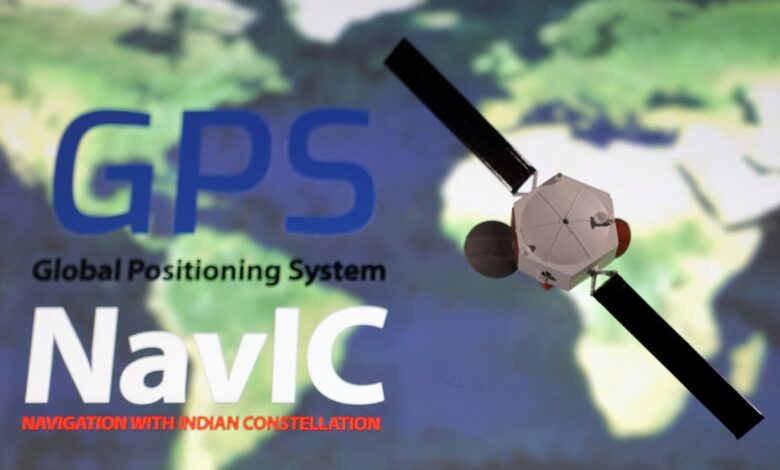Government wants to force phone manufacturers to support NavIC within months

India is pushing tech giants to make smartphones compatible with India’s navigation system within months, raising concerns among companies including Samsung, Xiaomi and Apple that fear higher costs and disruption because the switch would require hardware changes, according to two industry sources and government documents seen by Reuters.
In line with Prime Minister Narendra Modi’s drive for self-reliance, India has in recent years expanded the use of its regional navigation satellite system, called NavIC (Navigation with Indian Constellation).
The Indian government wants to reduce reliance on foreign systems, including the widely used US Global Positioning System (GPS), saying NavIC provides more accurate domestic navigation and its use would benefit the economy.
China, the European Union, Japan and Russia have their own global or regional navigation systems that can compete with GPS. NavIC has been operational since 2018 and its uptake is minimal; for example, it is mandatory in public vehicle location trackers.
But government and industry documents show that Modi’s government and space officials are keen to broaden its use. They have this year pressured smartphone giants to make hardware changes to support NavIC, in addition to GPS, in new phones they launch starting in January 2023.
In closed-door meetings in August and September, representatives from Apple, Xiaomi, Samsung Electronics and others opposed the proposal, citing concerns that making phones NavIC-compatible would increase research and production costs.
The changes would also require more approvals for testing, according to two smartphone industry sources and documents, which would disrupt business operations and planned launches given the Jan. 1 deadline.
Samsung declined to comment on the meetings, while Apple and Xiaomi did not respond to requests for comment. India’s information technology ministry and space agency ISRO, both involved in the project, also did not respond.
Samsung in particular raised its concerns during a closed-door meeting on September 2 between major smartphone makers and chipmakers and officials from India’s IT ministry and space agency, according to meeting minutes seen by Reuters.
Binu George, Managing Director of Samsung India, warned of cost concerns, telling officials that NavIC support would require not just new smartphone chipsets but many other components as well.
“This would increase costs as it would require changes in hardware design and additional investments to support India-specific devices. Moreover, companies have already prepared for models to be launched in 2024,” the minutes quoted him as saying.
George did not respond to a request for comment.
Smartphone makers have asked for time until 2025 to implement the changes. A senior government official said a final decision would be made soon.
The minutes state that the Indian space agency will provide technical support for the implementation of NavIC in new smartphones. Another meeting may be called.
India vs Others
According to the Indian space agency, systems such as GPS and Russia’s GLONASS are managed by their country’s defense agencies, potentially disrupting civilian services.
NavIC is completely controlled by the Indian government, which one day wants to expand the system worldwide, just like GPS.
India wouldn’t be the first country to pressure smartphone makers to add support for a native navigation system.
Russia wants to make it mandatory for smartphones sold locally to have its own GLONASS system. This will reduce the country’s reliance on GPS. Washington could disable GPS for citizens, as it did during military operations in Iraq.
China’s Beidou was completed in June 2020, and the official Xinhua news agency reported that in 2021, 94.5 percent of smartphones made in China supported Beidou, although it was not mandatory.
Xiaomi and Samsung together account for 38 percent of the smartphone market in India, the world’s second-largest after China. Apple’s higher-end smartphones have a share of about 3 percent in India, according to data from Hong Kong-based research firm Counterpoint.
Other Chinese manufacturers, accounting for another 28 percent of the market, were also present at the Sept. 2 meeting, government minutes show. China’s Realme, which has a 16 percent market share, was not there, nor were smaller manufacturers.
Apple’s website says it already supports the five global and regional navigation networks, including GPS, GLONASS and BeiDou, on current iPhones. The Indian directive could force it to add a new one.
A major concern for players like Samsung and Xiaomi is the higher cost of so-called dual-band chipsets that they need to support both GPS and NavIC, as these companies are market leaders in the sub-$200 (roughly Rs 16,300) category in the price-sensitive Indian market, smartphone industry sources said.
Chipset Care
For the procurement of NavIC-compatible chipsets, most smartphone manufacturers rely on global giants such as American chip designer Qualcomm Inc and Taiwan’s MediaTek.
According to Parv Sharma, senior semiconductor analyst at Counterpoint, the voluntary use of such chipsets in India has been limited because phone makers are reluctant to add the extra components — and the cost — required to make it work.
India’s space agency said that as of mid-2021, only about two dozen mobile handset models in India had NavIC capability. In total, there are about 300, according to Counterpoint.
During its Sept. 2 meeting, MediaTek said that all of the company’s chipsets for 5G phones would support NavIC, with “some cost improvement” and additional hardware. MediaTek added that it expected about 80 percent of mobile phones to be 5G-compatible within two years.
MediaTek declined to comment on questions from Reuters. Qualcomm said in a statement that it has been working with the Indian space agency for years to enable NavIC on its chipsets and will continue to do so.
Another lobbying campaign by smartphone manufacturers aims to convince the Indian government to make NavIC available on the so-called L1 satellite frequency already used by GPS, and not just the L5 frequency used by New Delhi.
Executives say this will make it easier for manufacturers to integrate NavIC into chipsets that primarily support the L1 band, reducing separate NavIC development costs.
India’s space agency ISRO told the meeting on September 2 that this was not immediately possible as NavIC would likely be available on the L1 band only by 2024-2025, after more satellite launches, according to meeting minutes.
© Thomson Reuters 2022




